Top 10 Most Beautiful Cat Breeds
Suggested by SMSThe are millions of cat owners in the world and USA has the most cat owners in the world. Many of the cats that I think are cute are located in Africa and can’t be kept as household so I will keep the list limited to cats that are trainable and not harmful to humans. If you have a suggestion on a cute cat breed just click on the about link above and email me. So here you a list of the cutest cat breeds.
10. Manx

Believed to have originated on the Isle of Man hundreds of years ago, the Manx is the only truly “tailless” breed recognized by the Cat Fanciers’ Association. While the tail length on the Manx can vary from “rumpies” (no visible tail), to “stumpies” (small “stump” of a tail) and “tailies” (short tail) the breed standard for the Manx specifies that only “rumpies” can be shown. Manx mothers are often known to produce “rumpies,” “stumpies,” and “tailies” all within the same litter. Recognized by the CFA since at least 1920, the Manx can be long or shorthaired and comes in a variety of different colors and patterns. The Manx is round in appearance, with its hindquarters higher than its front end due to its long back legs. The Manx is beloved by its owners for its sweet expression and playful personality. Manxes are often described as “dog-like,” and their playful nature can lead them to retrieving and burying their toys. Because of their longer back legs and unusual hopping gait, Manxes have been said to descend from rabbits.
9. American Shorthair
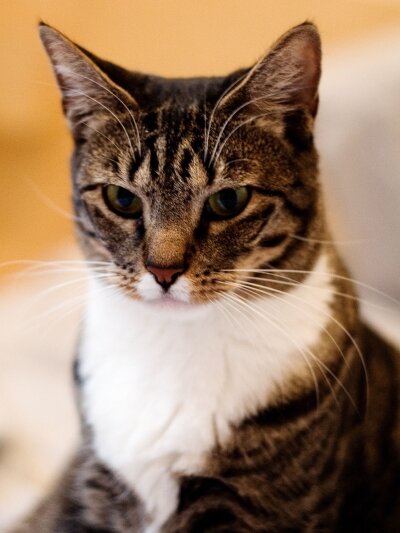

Extremely popular for its longevity, gentle nature, and handsome features, the American Shorthair is truly “America’s breed,” reputedly having arrived in the United States on the Mayflower, where they were used to trap mice and rats. Though related to the British Shorthair, the American version is longer, leaner, and more athletic than its British counterpart. The CFA, which lists the American Shorthair among the first five breeds ever registered, recognizes over 80 colors and patterns of American Shorthairs, including tabby, smoke, silver, and calico. While many feral and alley cats may resemble and American shorthair in countenance, the true mark of a pedigreed American shorthair is its ability to pass on its own desirable color, markings, and facial traits to its descendants. True “working” cats, the American Shorthair has come to be beloved in America as much for its amiable nature and playful personality as for its skill in mousing. American shorthairs are known for being extremely affectionate with their owners, gentle with children, and easy-going with other household pets. Possessed of a generally quiet disposition, American Shorthairs are amongst the healthiest and most energetic of breeds.
8. Chausie

Never heard of a Chausie? You’re not alone. This exotic breed is the result of careful breeding between wild “jungle” cats and domestic cats. Chausies were first bred in the 1960s and 1970s as a safer alternative to keeping jungle cats in the home. The goal in breeding Chausies today remains the same as it was when they were first created: a breed that has the looks, grace, and size of a wild jungle cat, but the gentle disposition of a domestic cat. Today, the most common domestic breed used for producing Chausies is the Abyssinian, as it has the same look as a jungle cat but is significantly smaller. Because adult males can reach as much as 25 pounds, Chausies require large spaces and a lot of activity. Though Chausies are not recognized by the CFA, they were granted status in The International Cat Association (TICA) in 1995. Chausies are large and heavy-boned, with long slender legs and strong, muscled bodies. Their head is a “Chausies sport piercing oval gold or yellow eyes, and a modified wedge” head, meaning it should look like a triangle with three rounded corners. Male Chausies in the first and third generations are usually sterile, so only Chausies four generations removed from the wild cat ancestor are considered “show quality.” In addition to being extremely loyal to its owners, Chausies have a high energy level, are champion jumpers, and are extremely playful, making them an ideal companion for young children.
7. Turkish Angora
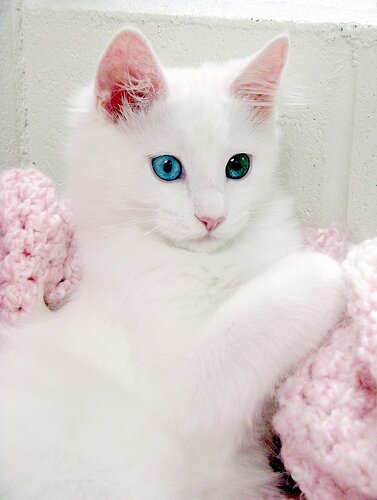

Considered a national treasure in its home country of Turkey, the Turkish Angora can trace its ancestry back to the Ankara region of Turkey to at least the 16th Century. Having most likely originated in the mountains, the Turkish Angora is believed to have developed its silky, medium-length coat as protection from the cold. Though the iconic Turkish Angora is white, breeders have increasingly developed them in different colors, including black, blue and tabby. The CFA currently recognizes more than 20 color varieties of Turkish Angora. In the early 1900s, the Turkish Angora was bred with Persians indiscriminately and almost ceased to exist as their own breed. Thanks to a controlled-breeding program in Turkey, the breed has continued to grow in numbers. However, every Turkish Angora registered with the CFA must be able to trace its lineage back to Turkey. The first Turkish Angora on record arrived in America in 1954, the breed quickly became popular for its beautiful-but-low-maintenance white coat, almond-shaped eyes, and large head. Playful and friendly, the Turkish Angora is extremely intelligent, good with children, and loves to provide entertainment for all comers.
6. Ragdoll

First created in the 1960s by a breeder in California, Ragdolls are known for their long silky coats and extremely relaxed and gentle temperaments. Indeed, Ragdolls are carefully bred for just such features. Larger than most other breeds, Ragdolls males reach between 15-20 pounds and the females weigh as much as 10-15 pounds. They sport a semi-long, silky coat and striking bright blue eyes. Due to their large size, Ragdolls mature at a slower rate than other cats, not realizing their true size until around 4 years of age. The CFA recognizes three variations of this “pointed” breed, two with patters containing white (mittened and bi-color) and one with no white at all (colorprint). As a result of careful breeding, Ragdolls are considered to be more interested in their human owners than some other breeds, often following their owners from room-to-room and enticing them to play “fetch.” Careful with their teeth and nails, Ragdolls are quiet and non-confrontational. Because of their relaxed and non-aggressive nature, Ragdolls should never be allowed outside unsupervised.
5. Toyger


In 1980, a breeder was attempting to clarify the mackerel markings on tabbies when she noticed tiger-like markings on the heads of two of her cats. This discovery prompted the idea of a domestic cat resembling a wild tiger, but suitable as a pet. In other words, a “toy tiger” that would inspire cat owners to care about the cause of preserving wild tigers. Though still not quite the final breed ideal, breeders hope to have achieved significant progress towards making this gentle and loyal companion further resemble a wild tiger by 2010. The ideal Toyger will have a large, muscular body, rounded ears, a long muscular muzzle, and vertical, tiger-like stripes. Though not recognized by the CFA, Toygers have been granted full status in TICA.
4. Persian Cat

Adored by cat fanciers across the globe for its thick, lustrous coat, the Persian is one of the oldest breeds of cat, having been imported from Persia to Italy in 1620. Despite a long, heavy coat that requires daily grooming, the Persian has become the most popular breed of cat in the world. While the flowing coat of the white Persian is probably most familiar to cat lovers, the CFA currently recognizes more than seven color divisions for show Persians. To keep its beautiful coat from being stained by dirt and other elements, Persians are best kept indoors by their owners The Persian’s extremely foreshortened muzzle In addition, its large eyes can tear excessively. Though a bit more high-maintenance than other cats, Persians are beloved by their owners for their sweet, gentle dispositions and loving companionship. Unlike some other cats who love to jump and play, Persians are happiest perched on the back of a sofa or window sill. Because of their laid-back nature and tiny little voices, they are wonderful companions for children and senior citizens.
3. Ashera


If you have allergies and an extra $22,000 lying around, you might be interested in the Ashera cat. Billed as a hypoallergenic cross of a domestic cat, an African Serval, and an Asian Leopard Cat, this breed is one of the latest “designer cats” to hit the market. Advertised as a mini-leopard, spots and all, the only Asheras produced for DNA testing so far were proven to be Savannah cats, another designer hybrid, with a new name and higher price tag. Alledgedly, the Ashera is highly intelligent, affectionate, and tips the scales at up to 40 lbs. With beautiful leopard markings and striking green eyes, there is no doubt as to the beauty of this alleged hybrid. However, until the Ashera is proven to exist, cat lovers may want to hold on to their checkbooks.
2. The Sandcat
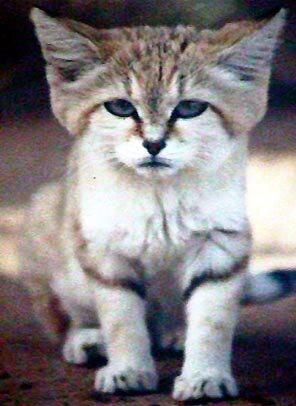

Cat fanciers can be forgiven for falling instantly in love with the beautiful and sleek Sandcat. A gorgeous sand color with striking gold eyes, the Sandcat has large triangular ears that protrude from its long, flat head, making it especially good at hearing even the softest sounds. Alas, the Sandcat is not available for domestic ownership, residing in the deserts of Africa and the Middle East. The Sandcat is especially well-suited for hunting in the desert; it’s sandy color helps it blend in with the, you guessed it, sand, and it sports hair between its toes that help it grip the sand and protects its foot pads from the hot sand and rocks.
1. Scottish Fold

There’s no denying the high adorability factor on the Scottish Fold. Beloved for their sweet expressions and equally sweet dispositions, Scottish folds have a tiny little voice that they rarely use. Called “Coupari” by some Canadian breeders, Scottish Folds have a naturally-occurring gene mutation that causes the cartilage in the ear to fold over, giving them their distinctive owl-like appearance. They are first known to have appeared in the Tayside region of Scotland in 1961 and were given full championship status by the CFA in 1978. Scottish Folds are medium-sized cats with soft, rounded bodies, full whisker pads, and large, widely-spaced, curious eyes. Born with straight ears, Scottish Fold kittens begin to exhibit their trademark “fold” at around 3-4 weeks of age, though not every Scottish Fold actually winds up with a Scottish Fold ear. These hearty and strong cats are generally mellow and take life as it comes. For this reason, they are excellent companions in homes with multiple animals or children.






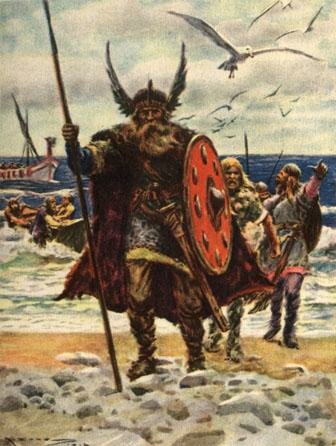

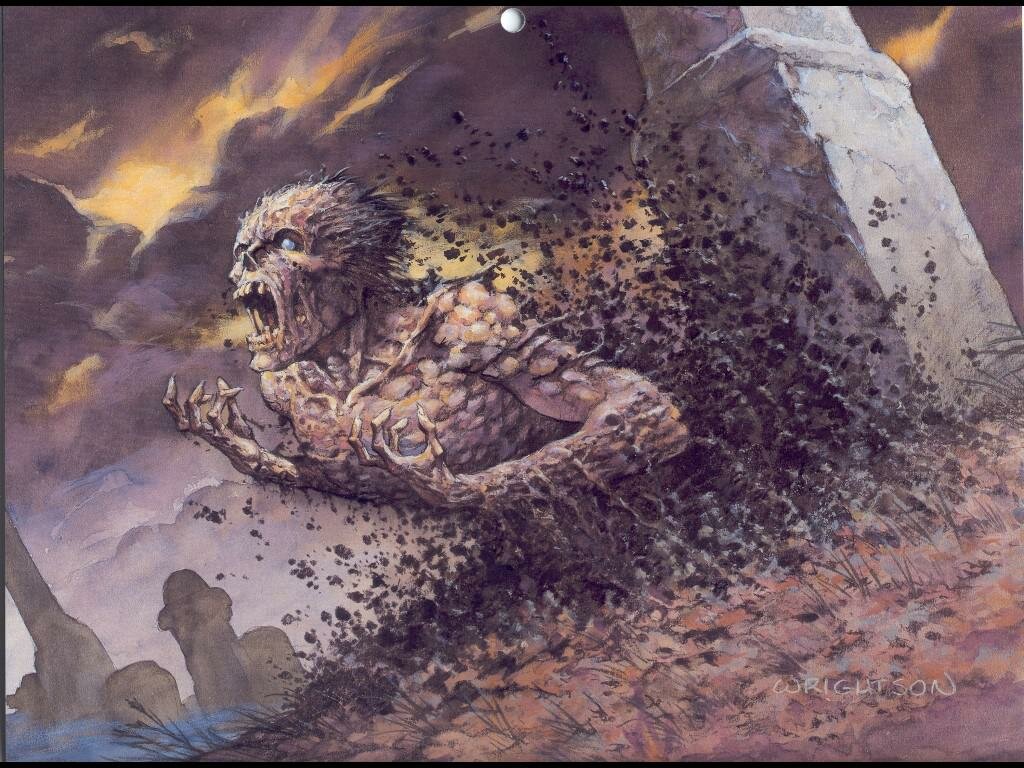

whay the the number one is scottis fold she is not the most beautiful in the world mostbe the number one is turkish angora her eyes is green and blue and she is beautiful…!
as long as you apreciate the felion you will agree that any bread is beautiful. smart. trainable. and has features any1 can admire. i am a cat lover. stealth.strength. reencarnate? CAT!
at least me … we whom enjoy and take the time to learn about them.
TURKISH ANGORA the reason the eyes are different colors is because it's deaf on one side. test it. lightly lift a finger near one ear then the other, the one ear that does not flinch; deaf.
False, a cat with 1 blue and 1 green eye does not mean it is deaf in one ear. I own a cat, named pipkin, who has that characteristic. I heard that tall tale about a cat with eyes like that is deaf, so I took him to a vet and had his hearing tested. He is fine and hears great I’m happy to say!
yes thay are all beautiful..!but im the most beautiful girl in the world ja ja ja…! im the only one my name is avril lavigne…!
hahahahah
very nice coments about your self
have a nice time
i love cats and thees all very very beautifull
Shahida, I like the scottish fold because they have rounded face and small ears. Cats that don't have more of a roar then a meow don't appeal to me.
Yeah that cats look beautiful but the persian cat looks scary because of all its fur and espeecially off of cats and dogs where it almost kills louis!:(
Who ever organized these cats in this order
must'v been out of his mind the number 1 cat
should be the
1-Ashera
2-shavanna
3-Siammes
4-TurkishAngora
and then you can put the others where ever u like
about the
-Scottish Fold
-The Sandcat
they are really ugly
I'm upset I thought for sure my Himalayan Siamese cat would be on here what about them you wanna see pretty look that up my kitten Dallas is the pretties cat in the world to me!!
i'm going to say you really missed the boat on this one by putting american shorthairs on this list when you could have included siberians or maine coons…and i generally find your taste in cats appalling…scottish fold and manx instead of havanna brown and somali? come on… ALSO sandcat should not be included because it isn't domestic- I mean, might as well put snow leopard or bobcat if you include sand cat.
Well they could include bob-cat, or at least the pixie-bob, which is a bobcat hybrid. I have one and he is the love of my life. 20lbs of love and purr with beautiful markings and a spotted belly that loves rubs.
OMG!! My kitty-kat is like a mix of 5 cats! He is sooo cute!
is he really that would be and sounds like an amzing cat!GREAT PICK!:)
I LUVV CATS!!! AND DOGS! well pretty much ALL animals!! haha
This is a very subjective list in nature but you definitely should include the somali, and if not the somali, then the abyssinian. Include one of them for their ticked coat and wild appearance. Somalis especailly look like foxes which adds to their wild allure but in general the two breeds highly resemble felis lybica (the African wildcat that is believed to be the ancestor of all domestic cats). The sandcat is indeed beautiful but as long as we're in the arena of domestic cats, they should not be included. While cute, the American Shorthair is not particularly stunning, but whatever, that's your opinion. This would be my list:
1. Somali
2. Birman
3. Ragdoll
4. Siberian
5. Maine Coon
6. Russian Blue (for stunning eyes)
7. Persian (duh)
8.Scottish Fold
9. Bengal
10. Siamese (or variations like the oriental and other sleek-cat derivatives)
my god whoever posted this has terrible taste in cats
1. classic siamese
2. snowshoe
3. tonkinese
duh!
wow you majorly missed the boat on this one, american shorthair wtf? asheeras arent even a real breed, some guy was selling regular savannahs, and sand cats arent even domestic and theyre fugly
1. classic siamese
2. ocicat
3. siberian
Hello everybody !
Me too I think that this order is not correct !
For me the most beautiful cat in this list is Turkish Angora but the most beautiful one in the world is not figured in this list because I’m sur that there are pretties cat around the world! ( they should find them XD )
I'm not sure why people complain over your list; it's clearly subjective. All cat fanciers have their own ideas of which breeds are most beautiful.
I agree about the Turkish Angora. they are lovely.
My own list would also include:
Siamese (IMO the most beautiful are the Old Style Siamese like the cats of the famous Prestwick cattery (UK) from ca. 1920s-60s and the ones now shown as the "Thai" in TICA. )
Abyssinian for those amazing ticked tabby coats especially the dark ruddy ones.
Russian Blue
Norwegian Forest Cat
Maine Coon
Bengal
Havana
Savannah
Persian (but I preferred the older type before the faces were SO flat and the nose break so severe )
I see several people don't like the inclusion of the American Shorthair. While I personally wouldn't put it on a top 10 most beautiful list, I can see why someone else would; they sometimes have gorgeous coat colour & patterns and cute faces.
Asheras are a fake breed, a scam. They're really Savannahs. The company was buying Savannahs and then selling them for a big markup, falsely claiming it was a hybrid of 3 species. This had been already suspected for a while and was proved when a cat that had been sold as an "Ashera" was confiscated at an airport in the Netherlands, and was identified via DNA as an F1 Savannah The cat was also identified by its original breeder; the person he sold it to had sold it to someone connected with the company selling "Asheras".
great pictures
for me its easily the Turkish Angora at #1. Anyone who has had the privelige of one of these creatures in their lives knows what im talking about.
RAGDOLLS ARE THE BEST BREEDS EVER!
#1.ragdolls are the best
#2.long hair cats are the second best
#3.maine coons are the third best
i like the most rag poll and Turkish angora
Ragdolls and mainecoons r the best!!
The Siamese is the MOST beautiful breed of all and is a natural breed. The Persian cat is the UGLIEST CAT I've ever laid eyes on, the breed should be wiped out. Its a wonder the poor thing can breathe with that ugly flat face. The Scottish Fold ain't much chop either and the Manx is just an ordinary cat thats been in an accident. I do love the Toyger and the Ashera though, but nothing can beat the beautiful SIAMESE!
-
Can you provide a good picture of the siamese cat. I would love to add another to the article. Thanks
1. Sand cat is a WILD cat i.e. not a breed but a different SPECIES. You may as well have included an asian leopard cat or a Pallas' cat or other small wildcats. How about a Serval? A bobcat?
1. Ashera cat is a SCAM! DNA tests proved that these are nothing more but F1 and F2 savannah cats sold at a huge premium. Really, it takes 2 minutes on the internet to see it.
Also, why don't you have bengals there? Or savannahs? Savannahs look identical to asheras (for obvious reasons).
Persian cats are the most popular cats in the world and for sure the most beautiful ones……..
the true list is :
1.persian 2.ragdol 3.sandcat 4.turkish angora
i agree with u jason
my list would be 1.siamse 2.scotish fold 3.turkish angora but for the persian i simply hate it it’s a very ugly cat especially with that ugly nose which u can’t even see
I'm turkish man from ankara(angora) but the cat shown here is not angora cat it is turkish van cat.Angora cats are different and it is unbelievible that you've missed siamesen cat!
persian is a most adorable, cute n beautiful cat…..
u can see that
ugh…the scottish fold first!? Not in my books, their eyes freak me out. They look like this face —-> O_O 24-7….it's wierd.
The others are cute, but this defiantly would NOT be my top ten that's for sure. But then again everyone has their preferences.
Yeah, while I agree with many of the cats on this list, I don’t agree with their order. I think Turkish Angora should be #1, and I apologize to any fans out there, but I’m not a fan of Persians at all.
People who are hating on this are really immature lmao it's just the opinion of the writer, duh.
And I LOVE the Scottish fold :3 such big eyes and it's ears make it look like a forever kitten
I respect all the opinions but i really Really REALLY! love Siamese cats! THEY ARE SO CUTE! But I dont like the modern i prefer the tradition oh! and I agree with you Jason that should be the right order.
Siamese? With that splat on the face? They're sweet creatures because of their nature, but they don't look all that pretty. Turkish, Persian, even Scottish Fold are really beautiful looking creatures. In terms of behavior, I have loved the ocicat.
Bengal cats or GTFO
most of these cats look gay
I find it alarming that you don’t mention the health issues associated with the Scotish Fold – namely – that they suffer extremely painful joint and bone growth problems. Their ‘Cute’ folded ears are actually a genetic mutation that wrecks havoc on their body as they age…….
I think the most beautiful cats are the ones rescued. Or at least their owners have the most beautiful hearts!
22,000.00 for a ‘special breed’ cat? I don’t think it will love you or bring you more enjoyment then a cat that just really needed a home. That kind of money would make a nice start in helping the shelters that save these beautiful animals.
I think the most beautiful cats are the ones rescued. Or at least their owners have the most beautiful hearts!
Omg I rly agree!
I think that people willing to pay that kinda money might want that cat if they have bad allergies. Of course not worth that price tag. I didn’t pay a dime for any of my cats and they are the best in my eyes and no price tag can be put on saving a life. It’s the best thing a person can do is help save a pet in a shelter.
yes yes and YES to your comment.
I Luv Catz PS: haha scottish fold : ) I have an american long haired cat and it is a playful cat it luvs my mom and it licks people and luvs to cuddle and when my mom walks in the door he wakes up because he knows its her LMFAO!!!!! he’s a fiend
Persian is the most beautiful cat in the world
Cool the cat in hall of fame ..
Siberians should be on the list
Lol I’m kinda offended when I saw some people said American shorthair shouldn’t be there, because I’m an owner of two adorable American shorthair :3 oh and the swirly pattern on those American shorthair is really beautiful!
But anyway, in my opinion, this is how I think how the list should’ve went:
1. Ragdoll
2. Siamese
3. Savannah
4. turkish angora (one of the most exotic breed I ever knew!)
5. American shorthair
And so on… ^.^
Oh and pwese no mean replies…. I’m just a 12 yr old cat lover. Okay, bye!
Oh yes love ur list. I owned one he passed away a great american shorthair and he was the best especially with children and beautiful he got so many compliments. I own a tokinese and a black cat now and they don’t get as many compliments as he got. I know it’s all subjective though. We all have different taste. But I think they are all beautiful. They all have beautiful qualities too my tokinese has beautiful blue eyes and my black cat he always gets complimented on his beautiful shiny haircoat. So I think they all have something that is just so unique.
Siberian!!
sweety sweety kitties
why arent bombay cats up there?
I know why not
Russian Blue, Russian Blue, Russian Blue. I don’t understand how those could possibly be left off this list.
Oh yes great one I almost forgot that one too.
I LOVE KITTIES OR CATS WHATEVER YOU ALL CALL THEM ;’
What about maine coons?I think it should be top 11 cause maine coon is gonna be on number one.
Yes they are missing… I was wondering why they weren’t up there and the siamese as well. They should have made a top 20 to fit in some more of the great cat breeds like Bombays.
LLL ur right,there should be 20 but maine coon is number one end of discussion.and and and listen my order according to top 20
1.MAINE COON
2.PERSIAN
3.SIAMESE
4.ABYSSISSIN
5.TOYGER
6.RAGDOLL
7.TABBY
8.BENGAL CAT
9.SAVVANA CAT
10.EXOTIC
11.BROWN OR ORANGE STRAY KITTENS(I SAID ONLY KITTENS IN STRAY)
12.BOMBAY CATS.
13.ASHERA
14.AMERICAN SHORT HAIR
15.AMERICAN BOBTAIL
16.MANX
17.TONKINESE
18.SCOTTISH FOLD KITTENS(ACTUALLY ONLY KITTENS)
19.TURKISH ANGORA
20.CHAUSIE
i love all the cats in the world
Too funny, I can understand having different tastes in cat breeds.
but this includes the Sandcat that is cute but is not even partly a domestic cat. Might as well put Tigers and Cheetahs.
But worse yet, this list includes a FAKE breed , a breed that does not even exist . The Ashera was a scam. This guy who promoted it and got all that publicity, a convicted con artist, was going around ( and getting others to help) buying Savannahs and calling them “Asheras” and marking the price way up.
and when one of them was confiscated at an airport in the Netherlands, and photos were posted, it was recognized by a Savannah breeder as the cat he had sold and it was genetically proven to be that Savannah.
It was in newspapers etc. at the time — years ago.
[...] our older cats would do it constantly asks for food, even though it does are more exploratory. My Keeba was a kitten meowed [...]